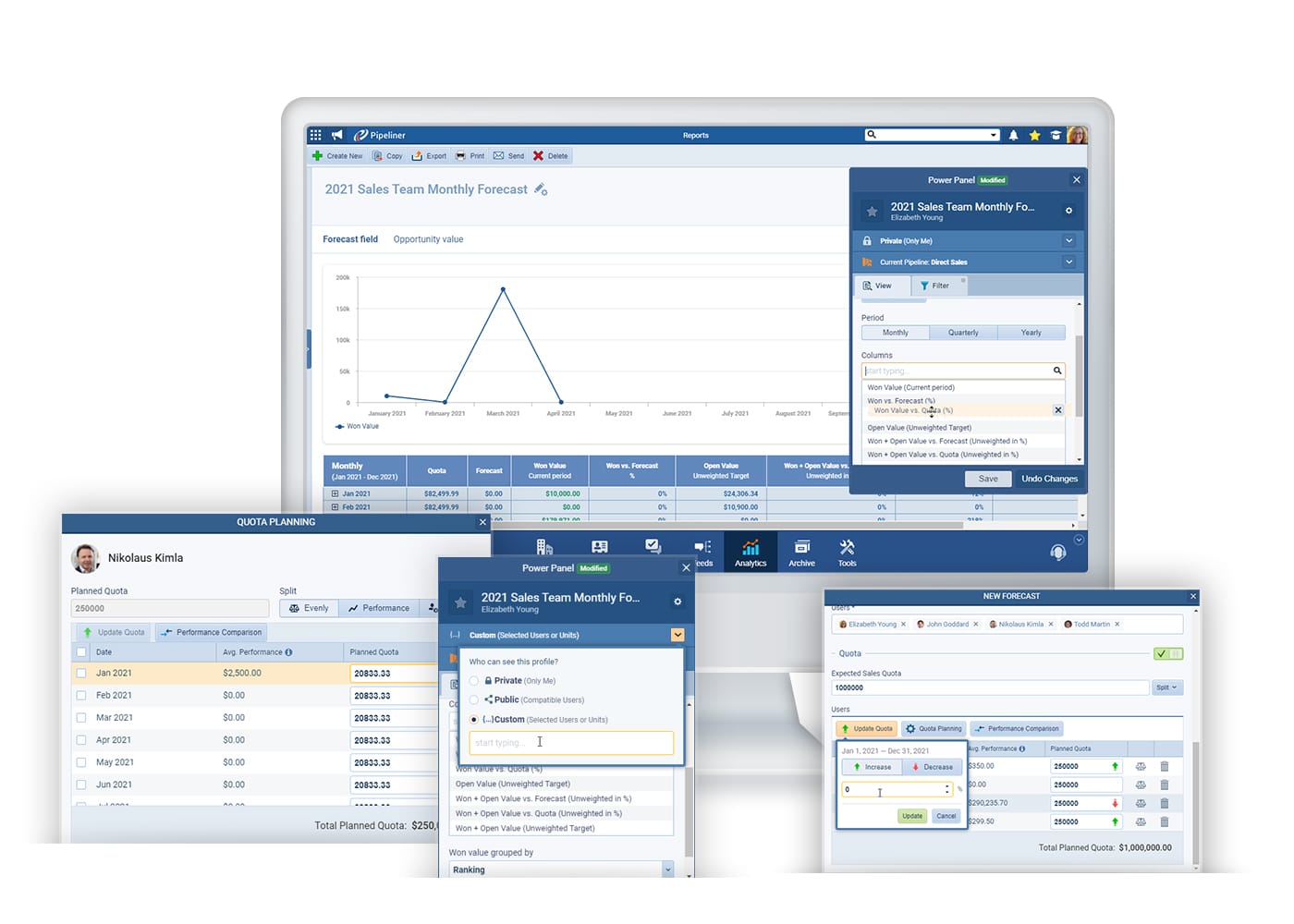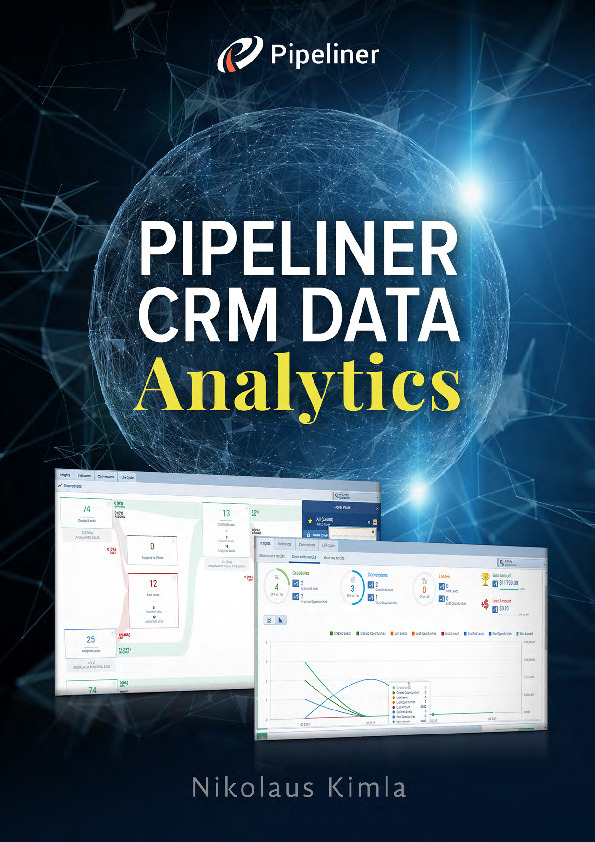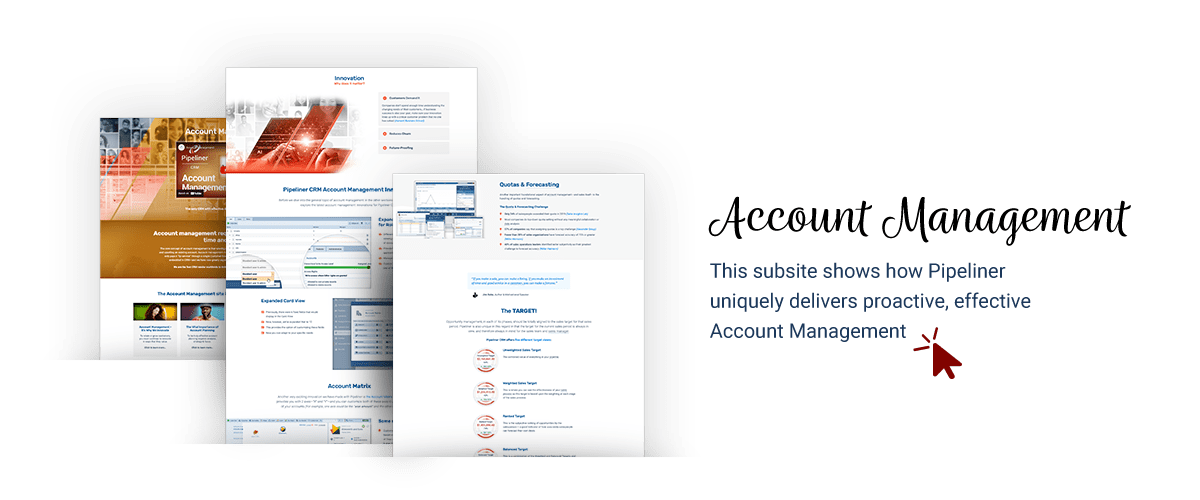AccountAccount Account refers to a record of primary and background information about an individual or corporate customer, including contact data, preferred services, and transactions with your company. Management
What is CRM
- What is CRM?
- Customer Relationship Management Software
- Account Management Software
- Contact Management Software
- Sales Lead Management
- Opportunity Management
- Sales Pipeline Management
- Customer Relationship Mapping
- Sales Enablement Tools
- Sales Management Software
- Sales Process
- Sales Reporting
- Task Management
- Custom Fields
- Team Collaboration
- KPIs for Sales & Leading and Lagging Indicators
- CRM Past Failures?
Managing Accounts for Sales Forces
Account management software empowers you to keep account information consistently up-to-date, organized, and actionable.
The Importance of Key Account Management Software for Sales Professionals
Account management is a considerable job – and one of the most important for a sales professional. Account management consists of several key functions, which added up actually summate to happy customers.
You don’t close a sale; you open a relationship if you want to build a long-term, successful enterpriseEnterprise Enterprise (in the context of sales) is a relatively large organization typically composed of multiple levels, locations, and departments which need multi-layer software systems that support collaboration across a large corporate environment..
 Patricia Fripp
Patricia FrippContacts
The first key factor is, who are the contacts for that account? What are their roles? How do they relate to each other, in terms of influence for the company and on deals for that company?
Account management software needs to address these points as part of its function. Ideally, you should visualize contacts, their roles and relationships for instant understanding.

Account SegmentationSegmentation Segmentation is the process of subdividing a large market into distinct partitions (or segments) based on demographics and other factors, with the aim of formulating and implementing separate strategies to better engage the consumers in each segment.
Another crucial aspect is how you segment accounts to tailor your management strategies. You might group accounts by how recently they’ve engaged with your business, how often they interact or purchase, and the overall value they bring. Think of it like sorting airline passengers—frequent flyers get different attention than the once-a-year vacationer, and high-spending customers may merit a bespoke touch.
By categorizing accounts based on activity, frequency of engagementEngagement Engagement is the state or process of keeping a specific class of audience (employees, management, customers, etc.) interested about a company or brand and invested in its success because of its perceived relevance and benefits to the audience., and the revenueRevenue Revenue is the amount of money a business generates during a specific period such as a year or a quarter; also called sales. they generate, your account management software can help you prioritize efforts, allocate resources effectively, and identify growth opportunities more quickly.
Centralizing CustomerCustomer Customer is an individual or an organization that purchases a product or signs up for a service offered by a business. Communications
Beyond contacts and relationships, it’s equally crucial to keep every communication thread accessible and organized. The correct account management software enables your team to seamlessly capture emails, calls, meeting notes, and even LinkedInLinkedIn LinkedIn is a social network for the business community. exchanges—all within a single dashboard.
This central repository ensures that you never have to scramble through inboxes or piece together information from multiple platforms. Whether you’re reviewing details before a call or picking up where a colleague left off, you’ll have a complete communication history at your fingertips for each account.
Pain Points
Any account as it relates to your company and products is going to have its *pain points* – that set of factors that brought them to your door in the first place. A key point of account management is to have a good handle on the pain points for any account. Then, utilize them in all communication with that account.
Account management software should incorporate the use of pain points, that is, make them plainly visible. Thus, any sales or marketingMarketing Marketing is the field, set of actions, or practice of making a product or service desirable to a target consumer segment, with the ultimate aim of effecting a purchase. personnel that needs them for understanding of and communication with that account can instantly access them.
Experience Pipeliner CRM Now
Sales Process, Activities and Tasks
The essence of account management is, of course, motion. That account is being moved forward toward the next deal, the next close.
Thus, we divide such motion up into clear steps. Broadly, these would be the steps of your company’s sales process – that precise series of steps that take an opportunity (account) from leadLead Lead refers to a prospect or potential customer (who can be an individual or organization) that exhibits interest in your service or product; or any additional information about such entity. all the way to close. Ideally, account management software would have your company’s sales process expressed visually in the pipelinePipeline Sales pipelineis a visual representation of the stage prospects are in the sales process. form. This will show where all deals stand in which stages.
Until you understand your customers — deeply and genuinely — you cannot truly serve them.
 Rasheed Ogunlaru
Rasheed OgunlaruWithin each sales process stage, there are various activities and tasks which must be performed to move that opportunity through that stage and into the next. Such tasks and activities are often written up or recorded as best practices for a sales organizationOrganization Organization is a cohesive group of people working together and formally bound by a shared identity (e.g., one team, company, club, etc.) and a common purpose (e.g., business growth, athletic victory, etc.)..
Ideally, account management software visually expresses both its sales process, and the tasks and activities that make up each sales process stage. In doing so nothing is left to the imagination – sales reps whether seasoned or green know where to go and what to do next to move that sale along.

Account-Based AnalyticsAnalytics Analytics is the active study of different types of data with the aim of discovering meaningful patterns and translating these into insight (such as historical analyses and forecasts), or action (such as those intended to improve business performance).
A crucial, yet often underestimated, component of successful account management is robust analytics. Built-in analytics tools provide a window into the lifeblood of your accounts, allowing you to move beyond basic dataData Data is a set of quantitative and qualitative facts that can be used as reference or inputs for computations, analyses, descriptions, predictions, reasoning and planning. and truly understand what drives each relationship.
With effective analytics, you can:
- Instantly pinpoint which accounts are your most profitable, so you can optimize where to allocate your top salespeople and resources.
- Quickly gauge priorities by reviewing account performance metricsMetrics Metrics are quantities that are measured and used to:, ensuring important customers never slip through the cracks.
- See trends and identify opportunities within each account, helping you proactively address their evolving needs.
- Track completion of critical tasks, so nothing gets overlooked as you nurture long-term relationships.
These insights empower you and your team to act with precision and focus, transforming raw data into actionable strategies that foster growth and keep your key accountsKey Accounts Key Accounts are whale spenders or VIP customers prioritized by sales reps and customer success; churn from these clients would be a detrimental loss to the company’s revenue. not only satisfied, but also delighted.
Leveraging Analytics for Smarter Customer Prioritization
A well-rounded account management approach isn’t complete without actionable analytics. Why? Analytics equip sales professionals with a clear picture of account health, activity, and value—no longer flying blind or making decisions based solely on gut feel.
With robust analytics tools, you can:
- Instantly identify your highest-value customers by tracking key metrics, including revenue contribution, deal frequency, and recent engagement.
- Identify key accounts that require attention due to real-time visibility into urgency indicators, such as overdue tasks or prolonged inactivity.
- Assign your top-performing team members to accounts that warrantWarrant Warrant refers to a contractual right entitling the holder to purchase shares in the issuing company during a specified period for a fixed amount, called exercise price. specialized care, ensuring the customers critical to your business receive the best expertise and attention.
In short, analytics become your compass, pointing you toward the accounts where focused effort produces the most significant impact. When you have this level of insight front and center, building long-term, profitable relationships becomes not just possible, but predictable.
Relationship Mapping
Another very advisable task for any sales force is to have a ready system of relationship mapping as part of account management. You can express this mapping in two ways:
Understanding Parent-Child Account Relationships
In account management, companies often encounter situations where one organization is composed of several subsidiaries, departments, or business units—all operating under a central, parent company. This is where the concept of a “parent-child account relationship” comes into play.
By organizing your accounts into parent-child structures, you create a clear hierarchy: the parent account represents the umbrella organization, while each child account stands for a different division, office, or subgroup tied to that parent. This approach allows you to:
- Track interactions and activities for each branch or unit individually, while maintaining a clear view of the bigger picture.
- Quickly identify decision-makers and influencers within any department.
- Manage communications, deals, and support in a focused but coordinated manner.
The true benefit? You gain streamlined oversight. Rather than letting critical details slip through the cracks by treating everything as a single account—or, conversely, as entirely unrelated entities—you maintain clarity and efficiency across the entire organization. That means smoother collaboration, more informed conversations, and, ultimately, better results for both your sales team and your customers.
As an Org Chart, that shows the hierarchy of your prospect company, and their roles as it relates to buying decisions and the buying cycle.
As a Buying Center — a visual interpretation of all the people involved with an account, and their relationships to and influence upon each other.





